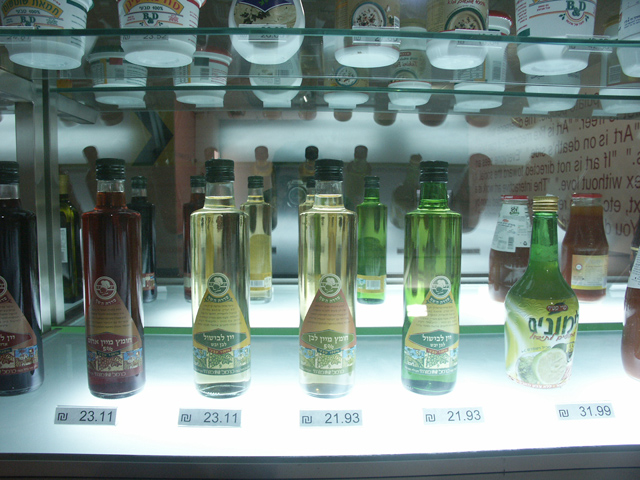









| HOW MUCH IS ENOUGH? |
This collaborative, site-specific installation, shown initially in Seoul’s Samsung Museum of Modern Art in 2003, included an in-gallery vitrine of actual food products, a wall of disturbing, sometimes famous quotes about art, all beginning with the phrase “Art is…” and an exit wall with the phrase “I’m always joking. It’s a defense mechanism,” taken from woody Allen’s Sleeper. The food products, which MeeNa and Sasa were selling to viewers by credit card after obtaining the relevant permits for conducting such commerce, were displayed under the phrase “ONEHUNDREDPERCENTONLY.” A monitor hung on another wall showed a looping image of identical shoes in different colors rotating on a rail. The installation interrogates the relation between the endless desire of consumerism and the kind of desire produced by artworks. Are buyers of the food products buying food to be consumed, or art to be preserved? Perhaps the two are not as different as we may think. The food purports to be a hundred percent “natural,” or “pure.” And the art? The surplus of consumer products is echoed by a surplus of art definitions, made near meaningless by their mechanical, alphabetized serialization: an arbitrary, hence empty, plenitude. This art also imitates the consumer products it studies by stripping itself entirely of the artists’ personal emotions, crafts, or presence. All of its materials – from video advertisements to street signs to other artists’ comments – are depersonalized. The artists’ borrowed exit line emphasizes the complicity they attest to: their critique of consumer society and of its evasion of personal responsibility is part and parcel of this selfsame society. |